Basketball drills
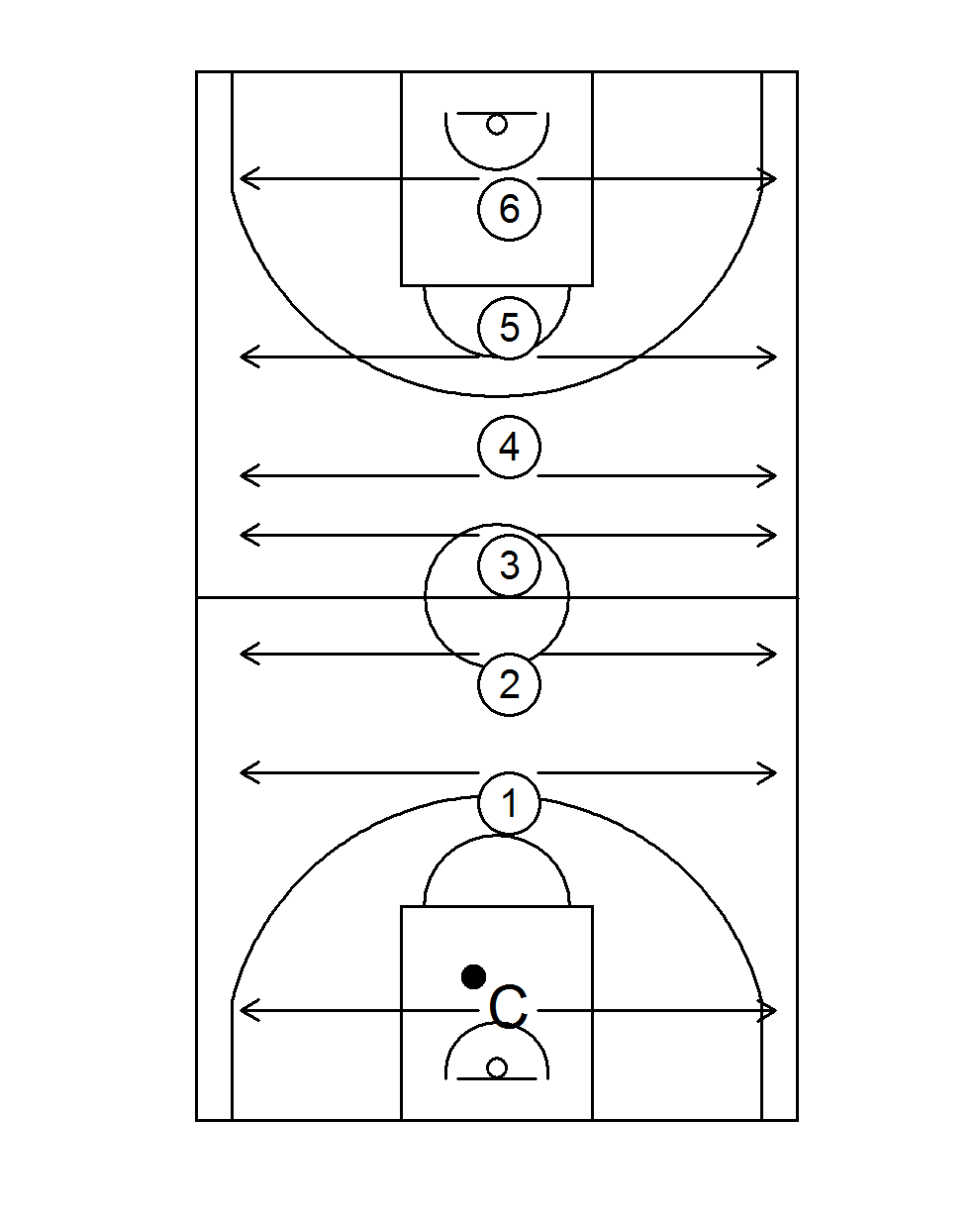
Goal: learn or improve side slides + condition
Organization:
- all players on the helpline, facing the coach
- when coach bounces the ball all players jump into defensive position
- coach moves to the left or to the right, parallel to the backline
- players must stay with their face right in front of the ball
- increase the level of difficulty by changing direction and/or speed at random
Teaching Points:
- feet at least shoulder width
- knees at about 100 degrees (= sitting down deeply)
- shoulders above the heels (= back straight)
- Head upright (overlook the field)
- Hand closest to the ball is low (to be able to tap the ball away on the dribble)
- Other hand is above the shoulder (to intercept a pass)
- push hard on the push-off leg to gain speed
- Feet stay low to the ground (= slide, shuffle)
- feet do not connect after a slide, but remain at shoulder width
Variations:
- let the defender keep his hands on his back if you want to accentuate the feet and stance.
- 1 slide and back to the sideline, 2 slides and back etc. until you reach the sideline; followed by a short fierce sprint back to the sideline
- first a drop step and then slides backwards to the sideline + sprint back
- idem, but first a little tap (quickly transfer weight from one foot to the other)
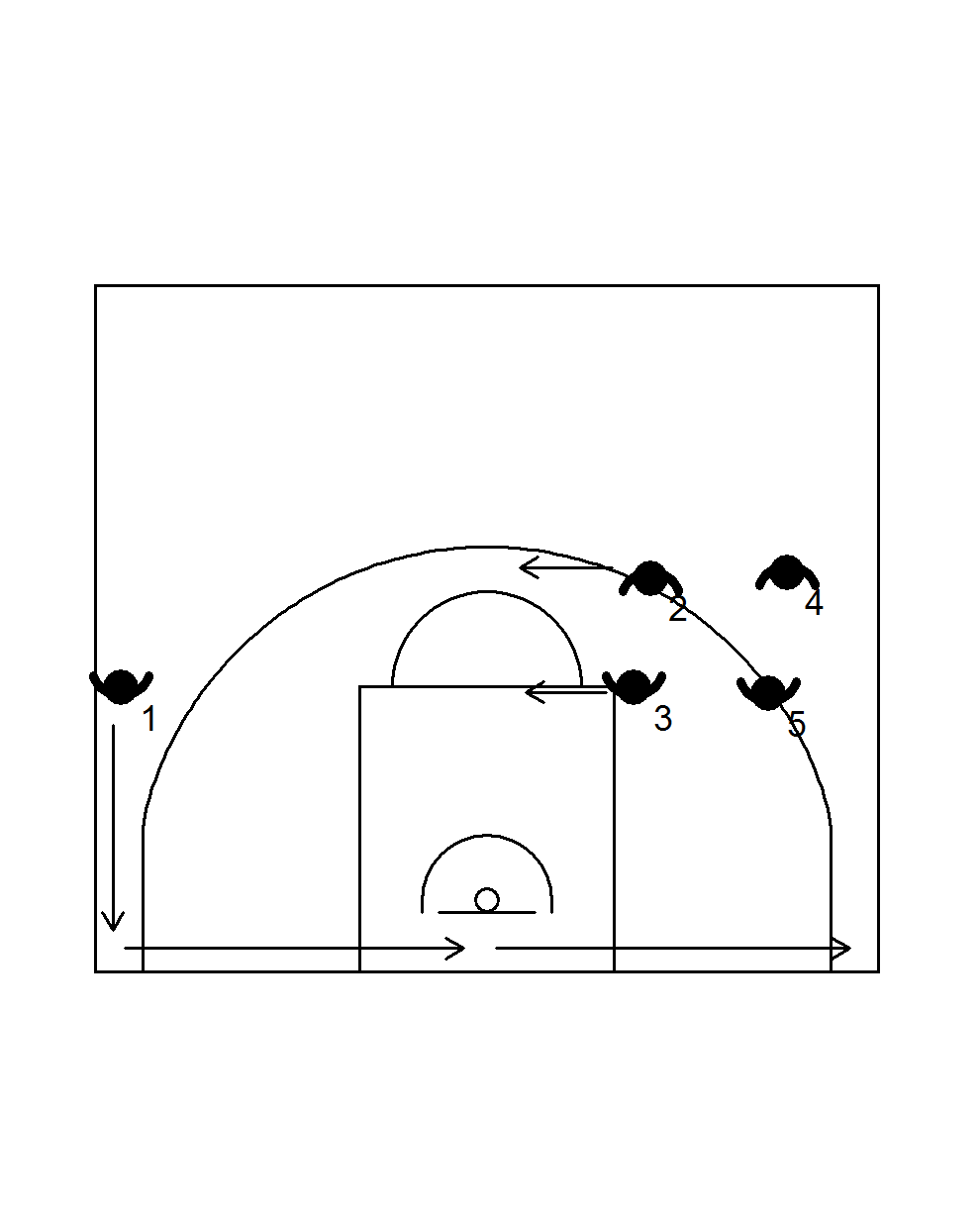
Prerequisites:
players must know what the correct defensive stance is
Goal:
- to reinforce good habits regarding defensive position
- To increase speed and flexibility of footwork
Organisation:
- always 3 minutes
- back over the backline with sprint to the basket and then slides to the sideline facing the centre circle.
- facing each other slowly - wax on wax off
- faster - hold both hands
- only the back hand
- follower holds the leader's shirt
- leader tries to get free by changing speed
- follower tries to keep his head in front of the chest of the leader
Teaching points:
- knees bent
- shoulders above the feet
- front foot pointing in the direction
- hands: wax on - wax off
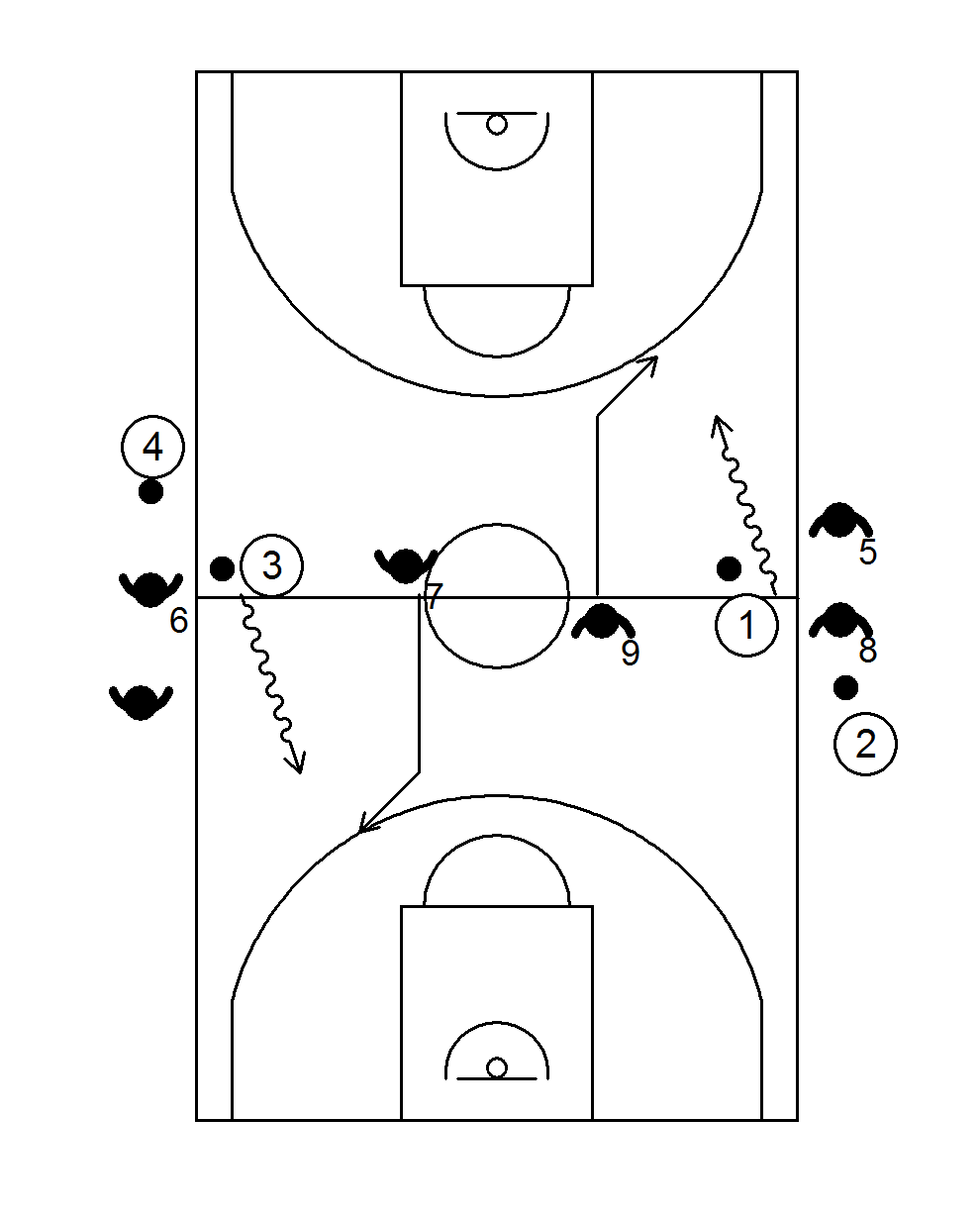
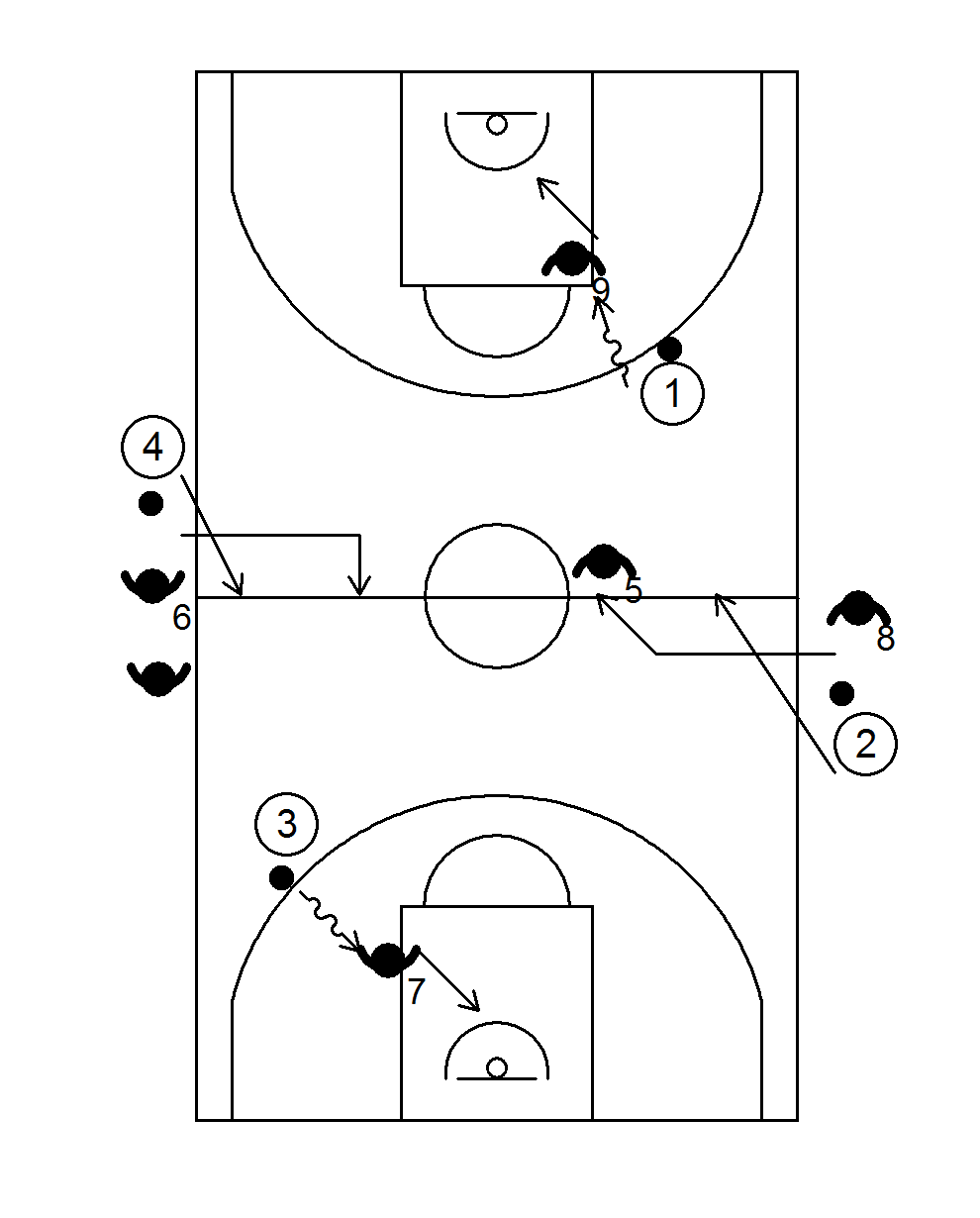
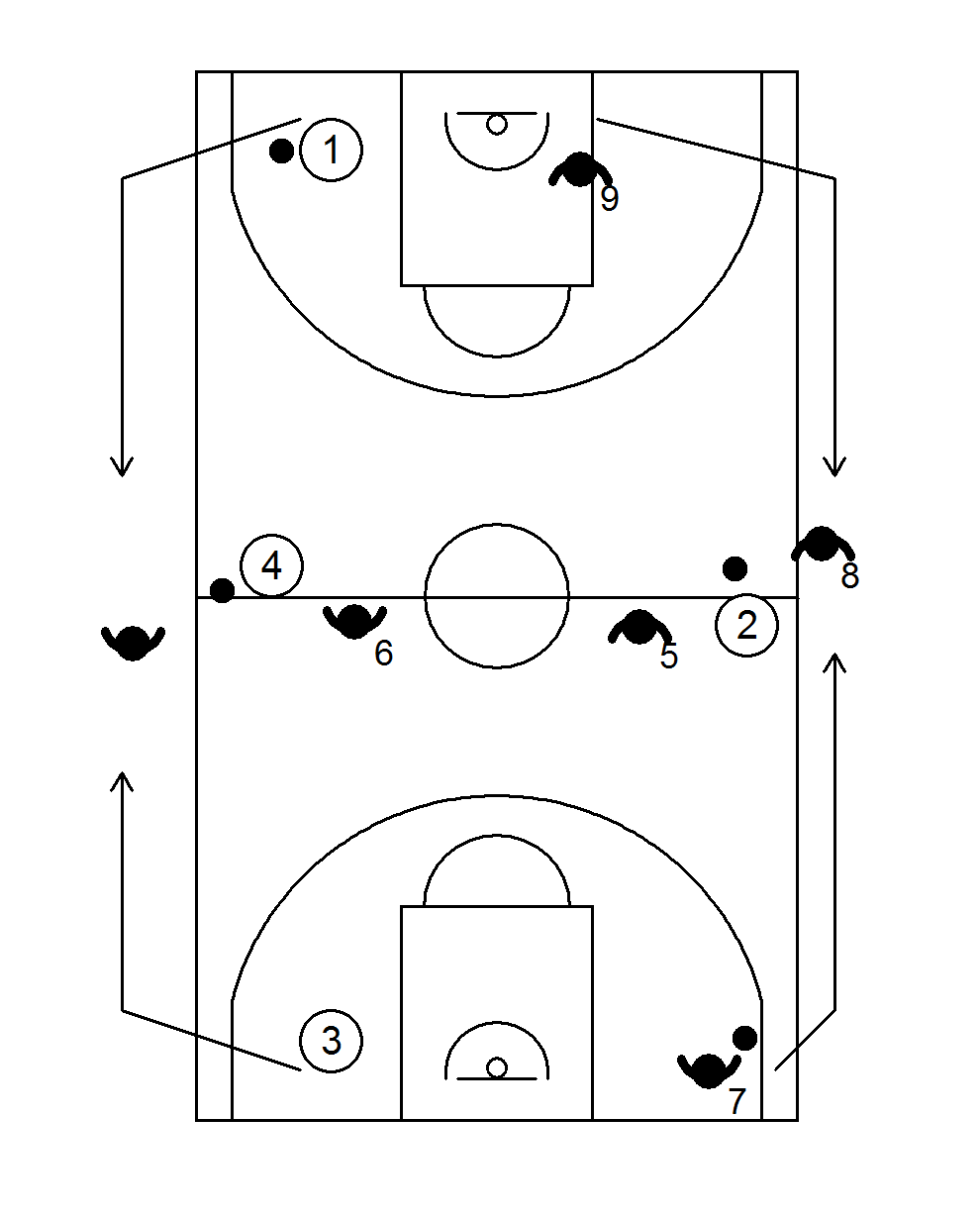
Requirements:
players must be able to defend the man with the ball individually (slides)
Goal: apply individual defensive technique in a simplified game situation
Organisation:
- attackers use one quarter of the playing field
- is not allowed to cross the baseline
- plays 1 against 1
- the defender may only step over the half-way line once the attacker has put one foot over the half-way line (the attacker may make feints, if the defender steps too early he must first put both his legs back behind the line)
- the defender first has to sprint to get his position between man and basket, then stay with slides between man and basket
- winner will attack on the other half of the court
- Loser keeps on defending in this quarter (turning in at the halfway line).
- the next pair starts when the predecessor takes the rebound.
Teaching Points:
- make sure you overtake the attacker by a large margin and only then take the defensive position.
- then immediately move backwards with slides
- In case of a defensive fault, the attacker is the winner.
Variations:
- let the defender keep his hands behind his back if you want to accentuate his footwork
- You can give good defenders a handicap by having them start 1 or 2 steps behind the attacker
- attackers can be slowed down by having them dribble behind their back in front of the 3-point line, etc.
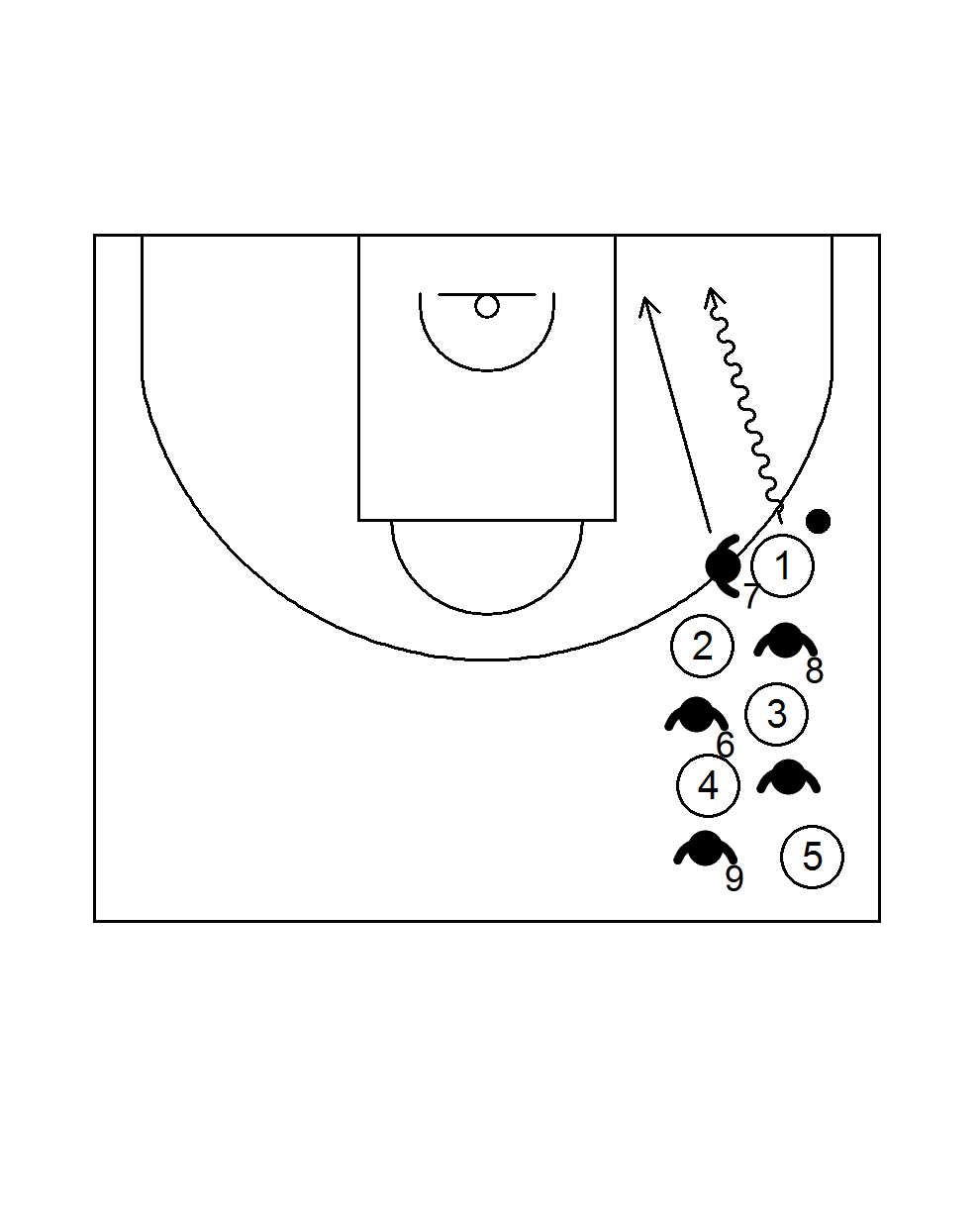
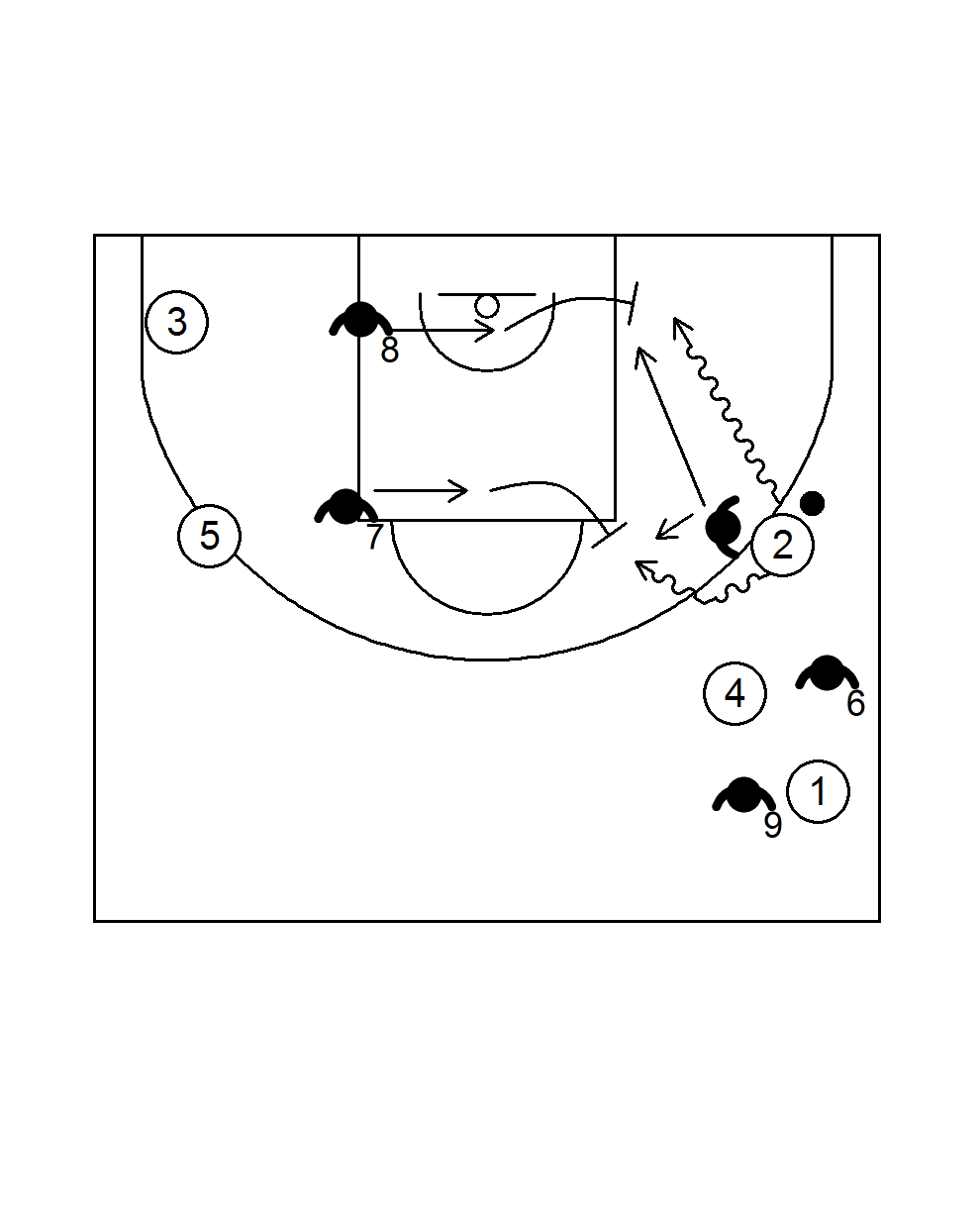
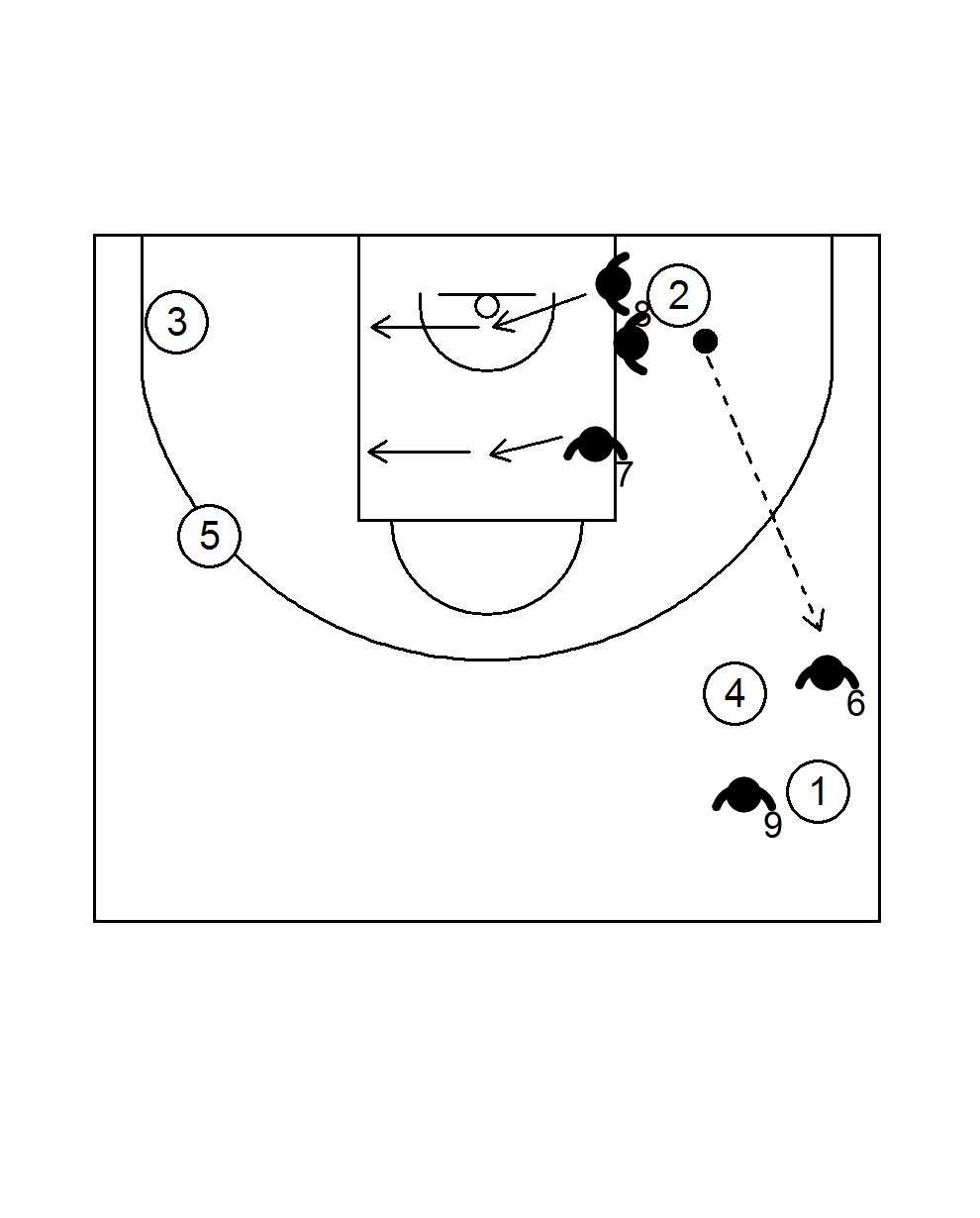
Prerequisites:
players must know how to use slides and sprints to keep their position between man and basket
Objective:
to teach positioning in the help side
Organisation:
- in the waiting line white and black take turns; offensive and defensive
- stop at the side of the bucket, pass the ball backwards to the next player
- closing the back and changing roles (attacker and defender).
Teaching Points:
- forearm on the hip of the dribbler
- sit deep
- Keep your nose in front of the ball
- Make sure you stay between man and basket until you get below the block
With two defenders on the help side:
- The help side defenders start with one foot in the bucket.
- As soon as the dribbler goes below the free throw line, both help side defenders step in until they reach the helpline.
- when the dribbler passes his man, they close the way to the basket (under the block or above the elbow)
RECOVERY:
- Â- as soon as the dribbler picks up the ball they sprint back to their position on the helpline
- Â- if he passes the ball back to the guard line, then the help position side bucket
Teaching points:
- defend close to the dribbler; don't leave room for feints
- only really help to stop the dribbler after he has passed his man
- but at all times prevent the dribbler from entering the bucket.
- recover immediately after you have helped and the ball is picked up or passed to the passer
- in the assisting position, your chest is parallel to the imaginary line between the ball and your man
- Split vision: see the ball AND your own man
- until you actually start to help Then you let go of your man and concentrate fully on stopping the dribbler
- when the ball is passed out, all defenders move to their new position while it is in the air
Rotation:
dribbler 2 and his defender take the bottom positions is3
and 8 go up5
and 7 join the back row the
defenders on the weak side are always the same colour as the defender on ball side
Variation:
- start with a skip pass
- 4 starts from the helpline
Teaching points for the recovery and close out:
- sprint two steps towards your man
- then use minislides to reduce the distance to an arm's length while lowering your hips.
- raise one hand to be able to block the shot
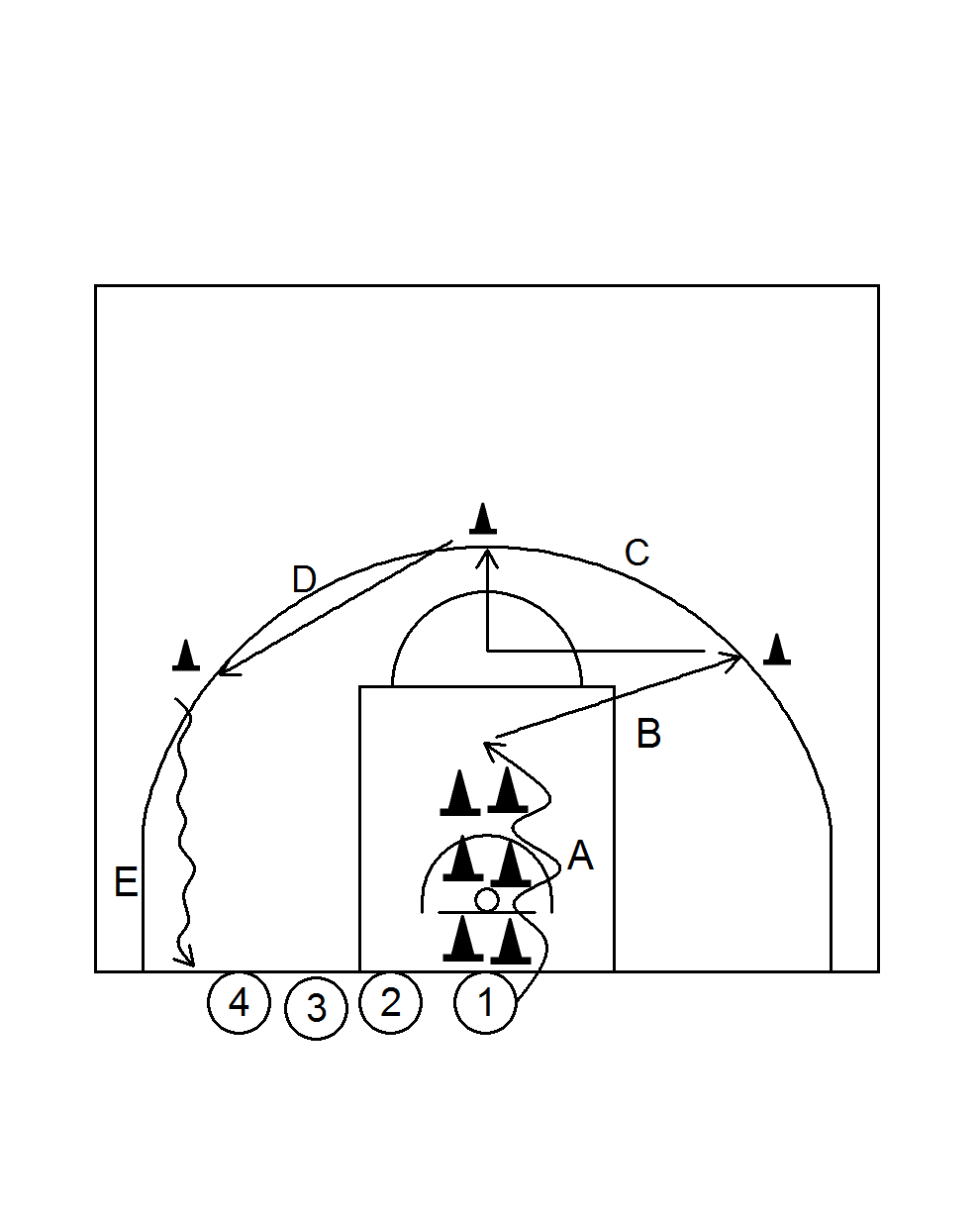
Prerequisites:
players must master slides and a close out of the shooter
Objective:
- to instill good defensive footwork
- increase speed and flexibility of footwork, plus fitness
Organization:
always 3 minutes
A jump strength
- start in defensive stance
- take off with two feet, jump high over the cones (try to touch your chest with your knees)
- land in balance, spring through the knees, feet at shoulder width
- and jump directly over the next cones.
B close out weak side shooter
- two explosive sprint steps, then lower your hips a bit + reduce step size
- inside foot in front
- outside hand in the face of the archer
- Touch the pawn with your inside hand (= check that you are sitting deep enough)
- take off with 2 feet and jump as high as possible with both arms stretched to block the imaginary shot
C help stopping penetration of the guard
- two explosive sprint steps, then lower your hips a bit + reduce step size + turn a quarter
- feet parallel
- arms wide
- quick step straight forward + pull in the back foot (in the game when the guard stops and shoots)
- tap the pawn with your hand
- push off with 2 feet and jump as high as possible with both arms extended to block the imaginary shot.
D defend the dribbler
- land in defensive stance
- powerful sllide steps to just in front of the pawn
- arms wide
- touch the pawn with your outside hand (= check that your seat is deep enough)
- take off with 2 feet and jump as high as possible with both arms stretched to block the imaginary shot
E turn the hips
- Face and chest parallel to the sideline.
- walk crosswise towards the backline
- alternately put the right foot in front of and behind the left leg
- while doing so the pelvis rotates which increases the flexibility of the hips.
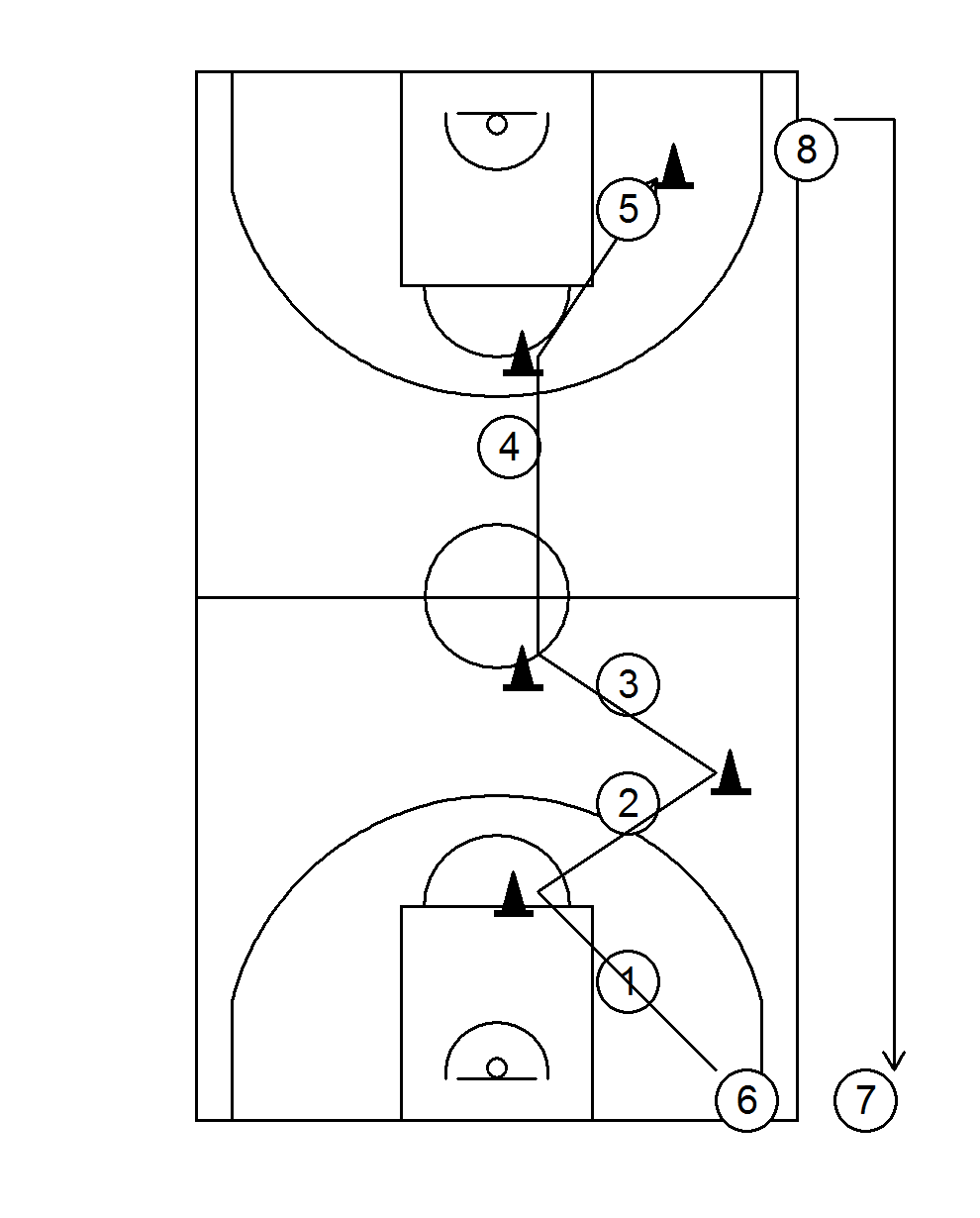
Goal: learn or improve drop step and side slides + condition
Organization:
- place 5 cones as shown
- vary distance and angle
- players move with slides from one pawn to the other
- at every cone they make a drop step and change hands from high to low and vice versa
- Always face the back line where the player started.
- between pawns 3 and 4, a short quick sprint (now with the face to the other back line)
- at pawn 4, turn 180 degrees, assume defensive position, drop step + slides to pawn 5
- in a quiet run back to the starting point
Teaching Points:
- Feet at least shoulder width.
- Knees at about 100 degrees (= sitting down deeply)
- shoulders above the heels (= back straight)
- Head straight up (overlook the field)
- Hand closest to the ball is low (to be able to tap the ball away on the dribble)
- Other hand is above the shoulder (to intercept a pass)
- push hard on the push-off leg to gain speed
- Feet stay low to the ground (= slide, shuffle)
- feet do not connect after a slide, but remain at shoulder width
- at the drop step, the foot closest to the ball moves backwards quite a bit; then the defender changes direction and the hands change from high to low and vice versa
- intermediate sprint must be quick (= simulate recovery of defensive position after the dribbler has passed the defender)
- take up position between pawn 4 and the basket and immediately with slides to pawn 5
Variations:
- let the defender keep his hands behind his back if you want to accentuate his feet and stance
- make bigger differences in the distance between the pawns and the angle they are placed to each other.
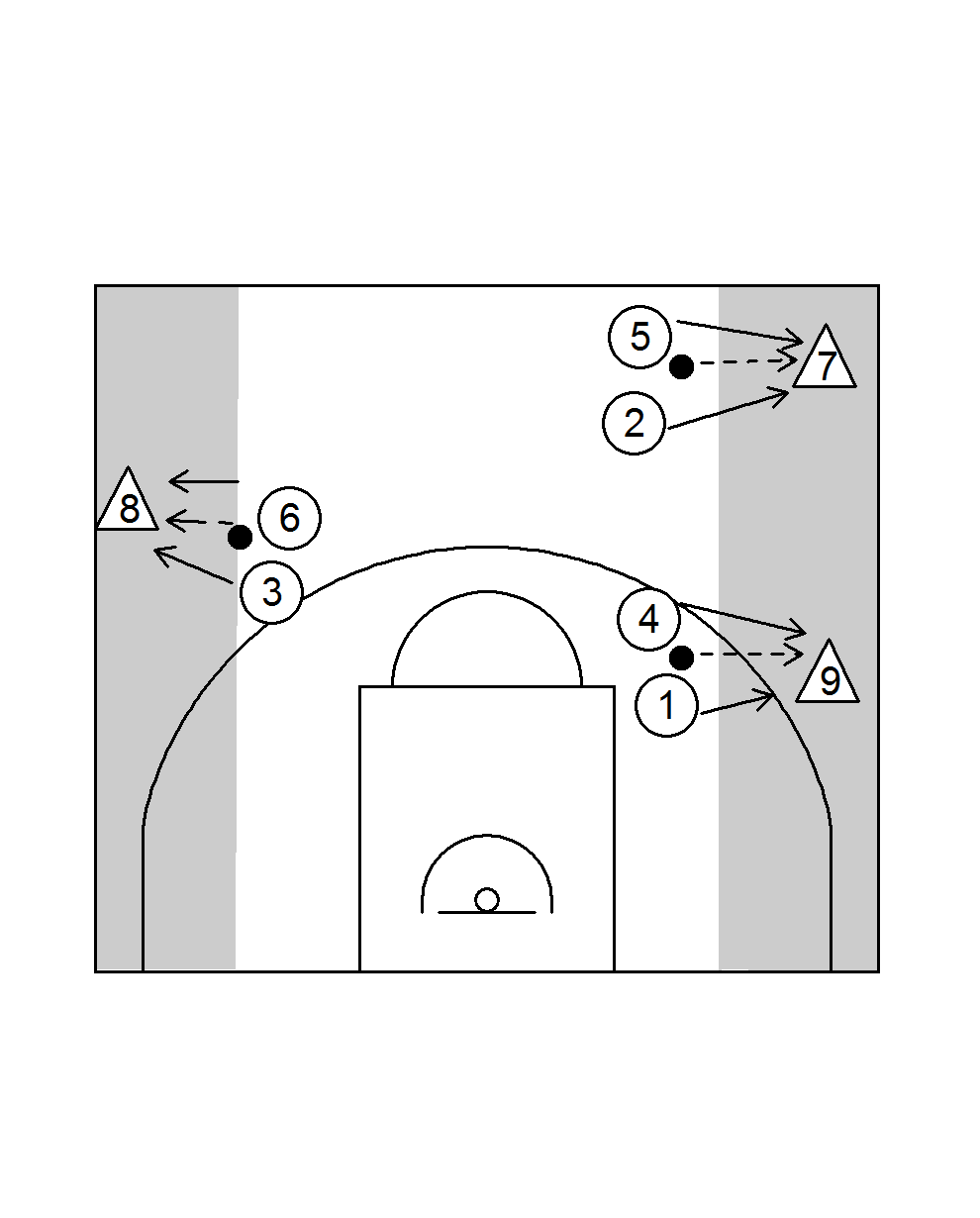
Goal: securing the dribbler against the sideline after stopping the dribble
Organisation:
- defender passes to attacker on signal of the coach
- Attacker is NOT allowed to dribble, only to pivot.
- the trainer counts down 5 seconds
Teaching Points:
- Get as close to the attacker as possible (but stay in your own cylinder).
- Move your feet closer to the attacker, but keep your position between the attacker and the helpline.
- If the attacker allows you to have his back, move your feet forward.
- trace the ball
- defenders always one hand low and one hand high (Umbrella)
- the attacker is never allowed to step or pass between the defenders (only passes parallel to the sideline are allowed)
- avoid mistakes; conquer ball by 1) 5 seconds, 2) bad pass, 3) attacker's foot on the line
Form of play:
Two additional attackers running free outside the lane. A successful pass between the defenders is a point for the attackers. 5 seconds or foot of the attacker on the line is a point for the defenders. Play to the 2.

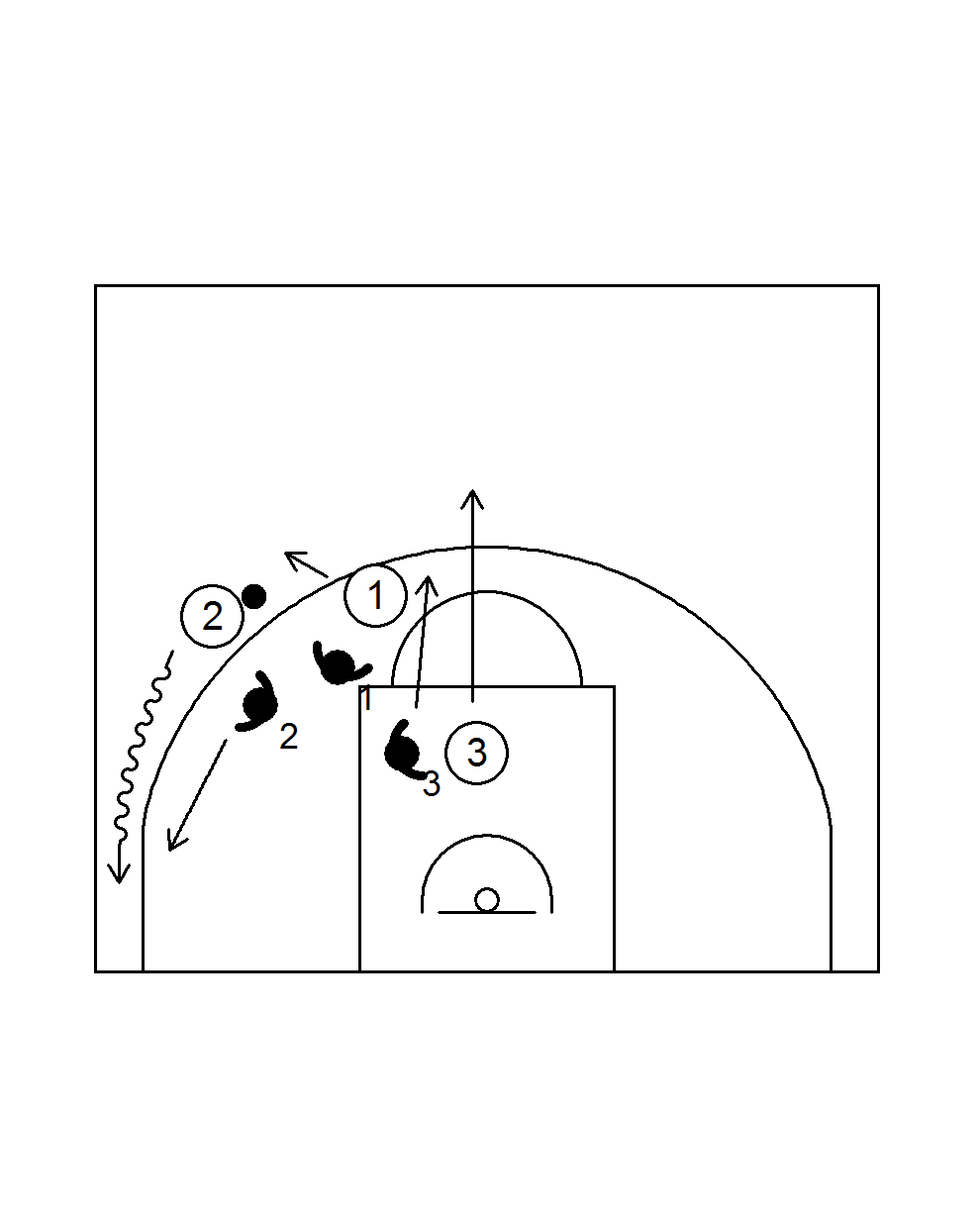
Goal: to defend one pass away
Organization:
- attackers use quarter of the field
- try to get free with in-out or cut
- first restore balance by occupying the 3 positions before cutting again
- defender overplays when his man is playable with one pass
- attacker can dribble
- a waiting player counts down 20 seconds
Teaching Points:
- hand in the passing line
- front foot in the passing line
- catch your man with your forearm
- 3/4 of your attention on the man, 1/4 on the ball
- NO help
- change after x stops
Form of play:
- each team gets 5x ball possession
- who makes the most stops
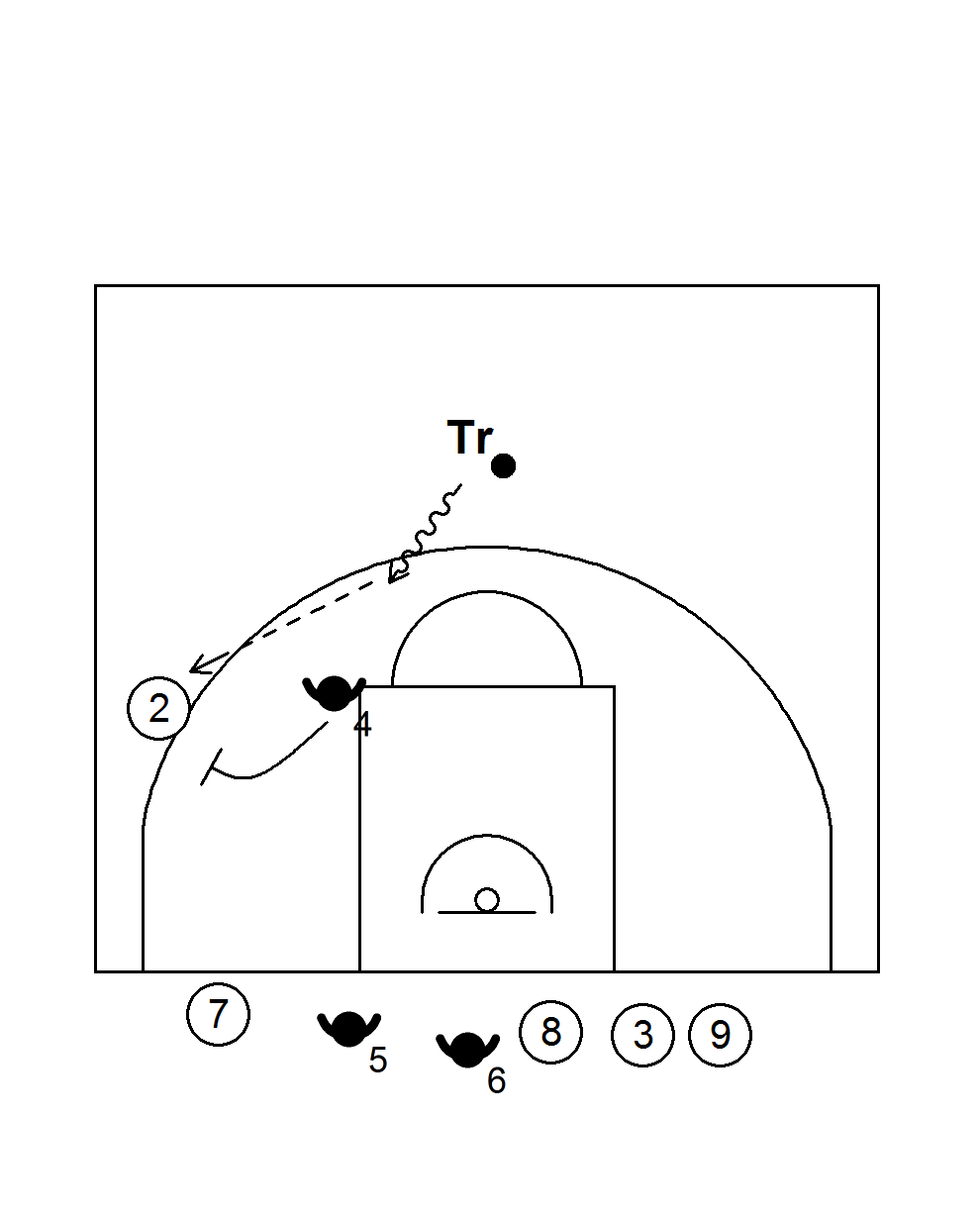
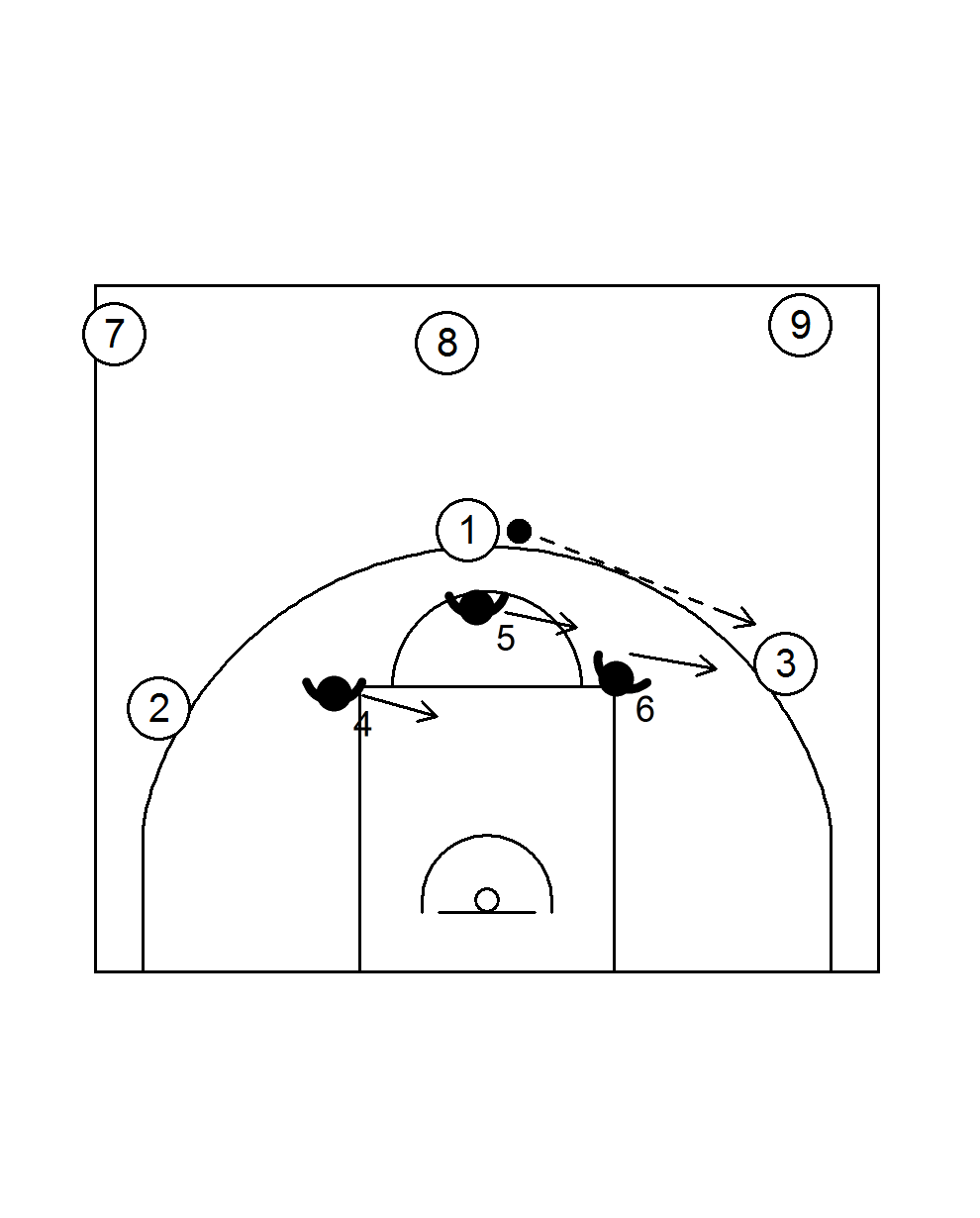
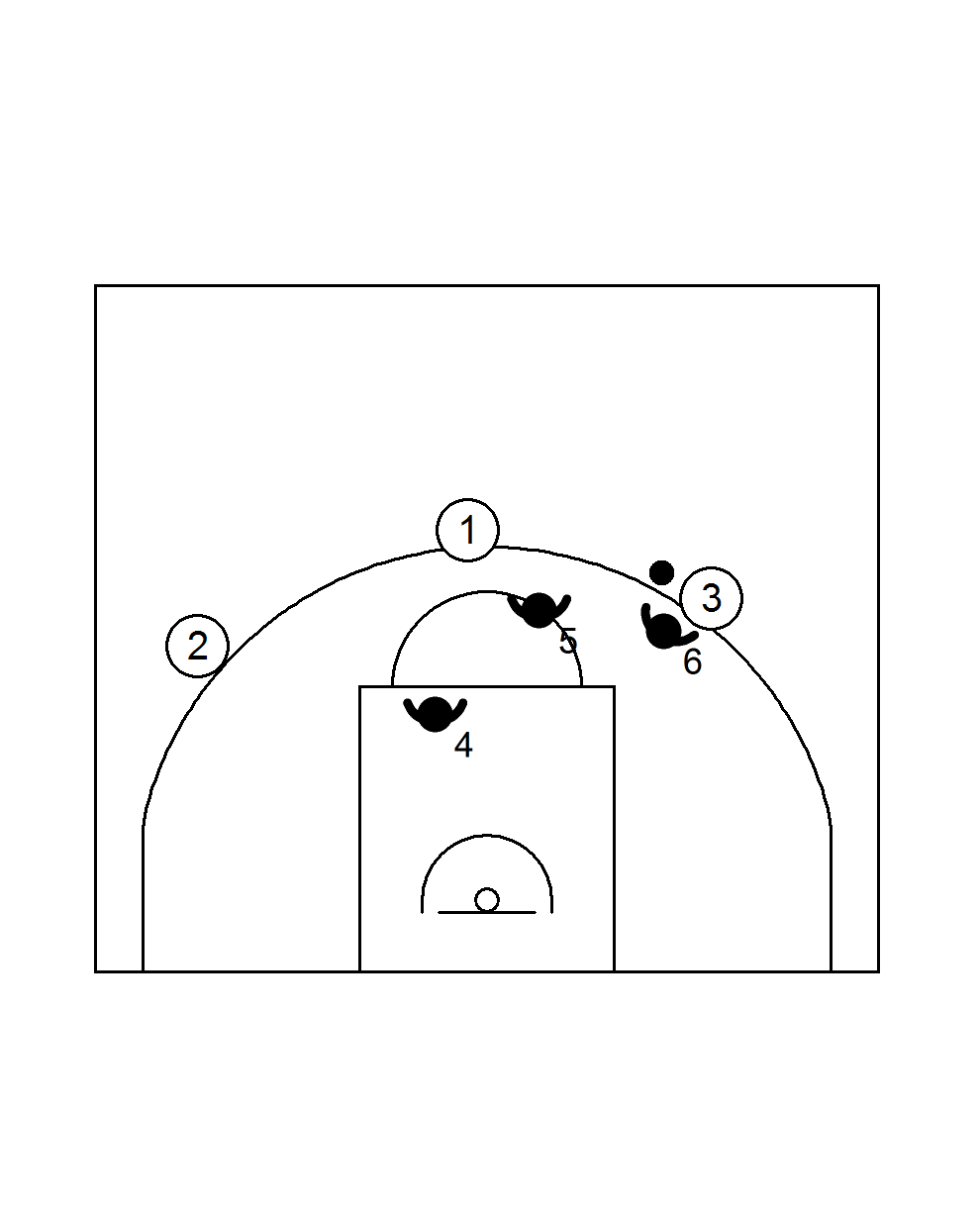
Requirements:
players must be able to play individually 1 against 1
Goal: train position of the defender to help prevent penetration (instead of passing over) + recovery
Preparation:
- the defender must first choose his position in such a way that he can help stop the penetration
- after matching the attacker, he takes up his position between the ball and the ring
- at the distance suited to the qualities of the attacker
- or at the distance requested by the coach
- the players play 1 against 1
- Attacker becomes defender.
- New attacker turns in
Organisation:
- the three defenders start in the bucket, with the ball
- defender 5 rolls the ball to 1 and defenders take up their positions
- attackers hold their position and pass the ball back and forth (also pass fakes!!)
- they may score with a drive or a dribble with jump shot
- a three-point is a point for the attack
- a two-point shot is a point for the offense, but
- if there is still a defender between the shooter and the basket at the moment of shooting, it is a point for the defense
- interception or defensive rebound is a point for the defense
- play until the 5, then change
Teaching Points:
- defenders have to take the right position immediately after the pass with an explosive step
- Anticipate the pass and take a slide step so that you can get to your defensive position earlier (in case of a pass fake, you have to take a slide step back quickly)
- one pass away = one metre from your man and one metre from the passing line, so that you can help with the penetration of the ball
- when the ball is 2 passes away, you have to stand with 2 feet in the bucket
- immediately after the shot, both defenders must look at their man instead of the ball and box out
Variations:
- offensive rebound is a point for the attack (if you want to emphasize boxing out)
- shallow cut from 1 after the pass + 2 rotates to the head
- shallow cut from 1 after the pass + 2 sets a screen for 1 under the elbow and then steps out to the guard position
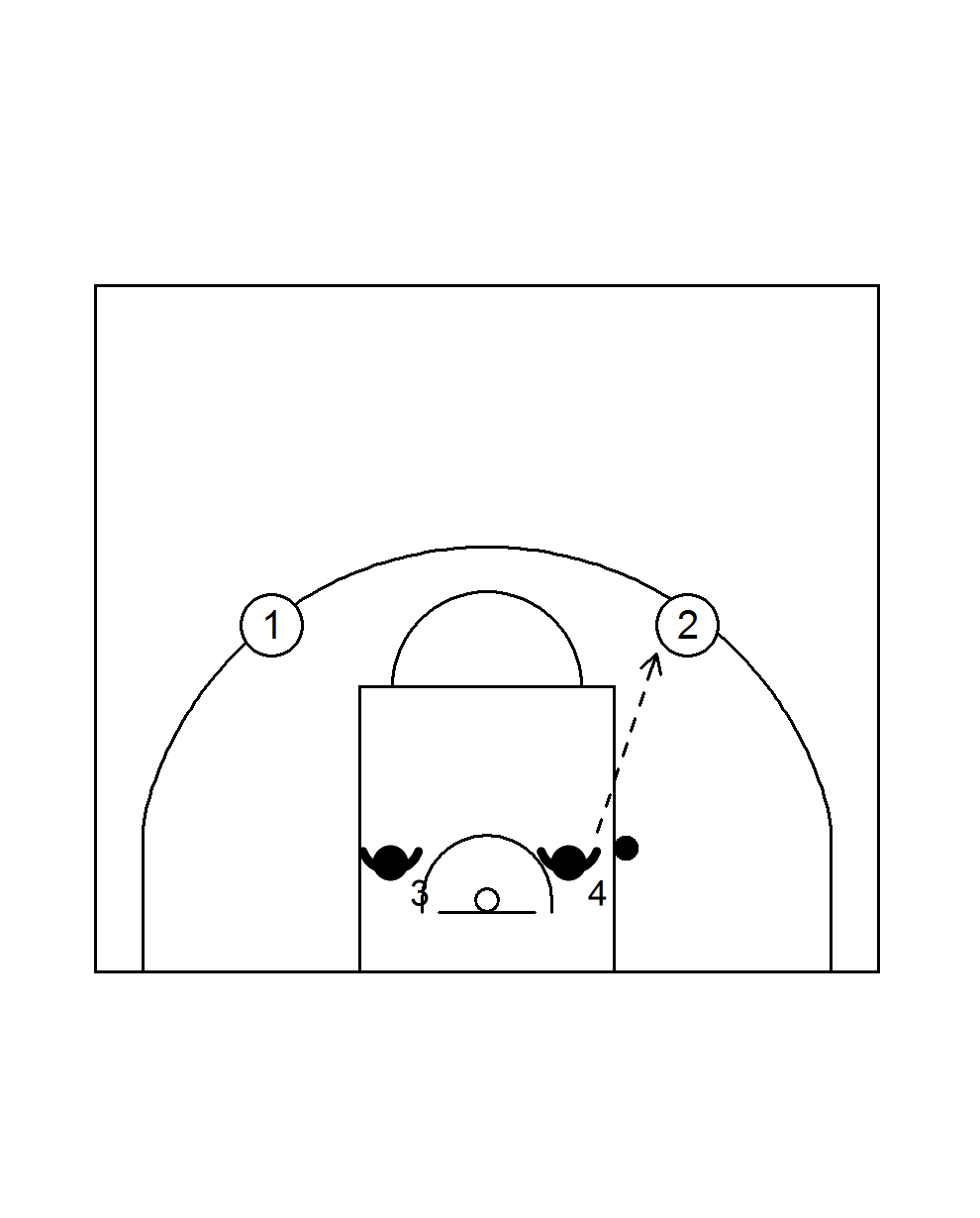
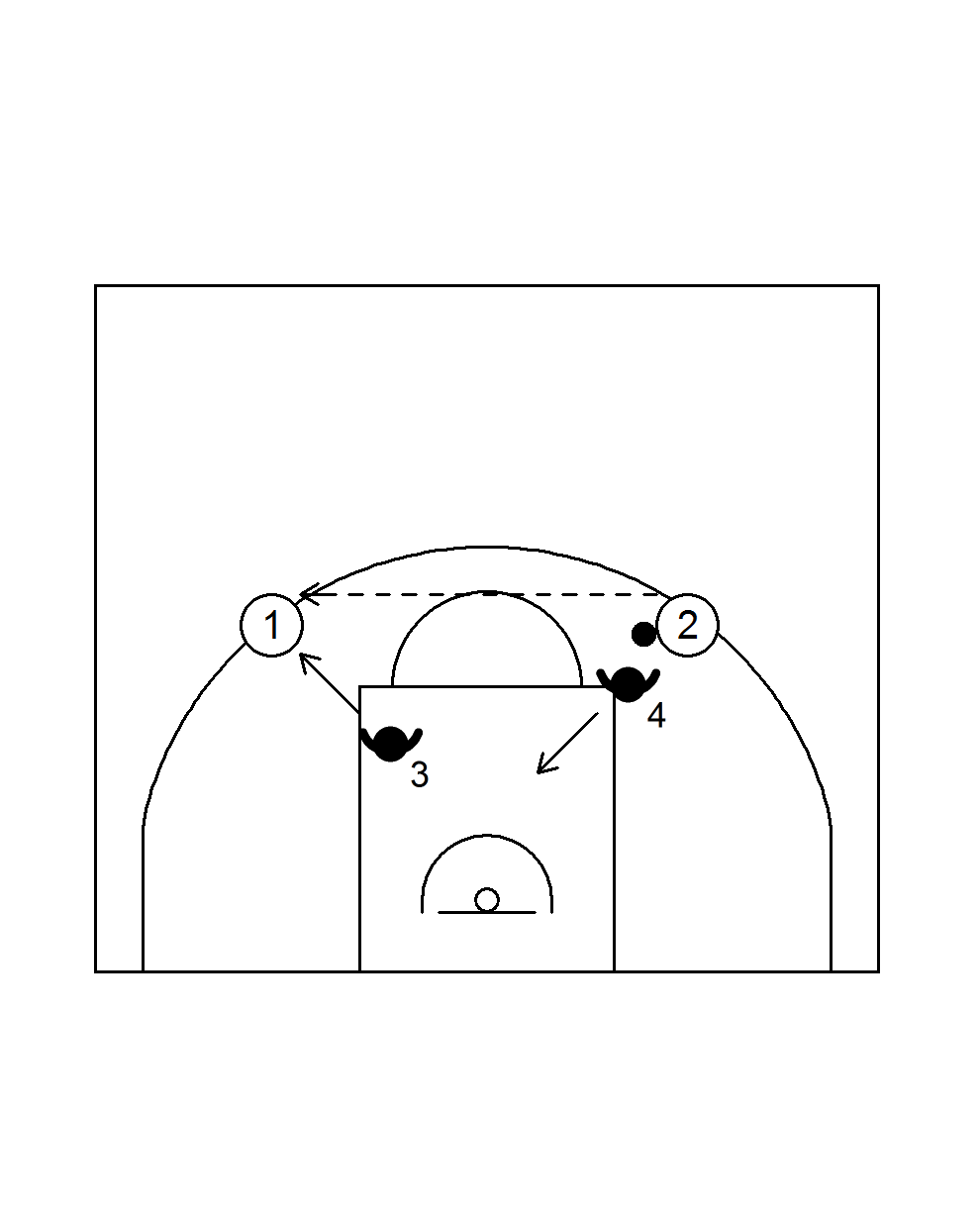
Requirements:
players must be able to play individually 1 against 1
Goal1: Improve the position change of the defender between helpside and ballside defense
Goal2: boxing out after the shot
Organisation:
- one of the defenders passes the ball from under the basket to an attacker
- A defender on the ball side closes the way to the basket (close out).
- the other defender takes the help side position: one foot in the bucket if the ball is above the free throw line; on the basket-basket line if the ball is below the free throw line
- When the ball is passed to the weak side, both defenders must quickly adjust their position relative to their man.
Substitutions:
- make it, take it
- or two is too much (push up defenders after 2 consecutive scores)
- (if you have more than 4 players, let the other players practice shooting at the other basket)
Teaching Points:
- Close out weak side shooter
- two explosive sprint steps, then lower your hips a bit + reduce step size
- inside foot in front
- outside hand in the shooter's face
- After the shot:
- immediately after the shot, both defenders must look at their man instead of the ball and box out
- put the forearm on the chest of the attacker
- box out with a front pivot or a reverse pivot and chase the ball
Variations:
- defenders may score from a rebound or interception
- the scoring team continues to attack
- play until the 7
Prerequisites:
players must be quite proficient and in good shape
Objective:
concentration and energy in defense
Organization:
- 4 against 4 on one basket
- new defenders when the defence has made 3 stops (i.e. the defenders gain possession of the ball).
- after a score or a foul on the shot, the defending team returns one stop
- The exercise lasts 12 minutes
- and if you do not defend well, you are defending for 12 minutes.
- if the attacks take too long, the trainer will count down loudly: 5-4-3-2-1-0
Teaching Points:
- After 2 stops the whole defense steps up their game. When they make the third stop, they can start attacking.
- As a side effect, the attackers learn in a playful way who will hit the balls when it gets exciting, and who will not.
When you have 12 men:
- rotate with 4 men
- After every stop, score or foul on the shot, a new team of attackers enters the field (trainer determines if it is a foul).
- the team that causes the third and last stop goes to defend
Variations:
- three defenders, four attackers
- make 2 or 3 consecutive stops before being allowed to change.
- (with shot clock) 35 seconds of defense without scoring and without a foul. At a stop, the clock stays on and the attackers can try again. If the attackers score, or grab an offensive rebound, or if the defense makes a foul, the clock goes back to 35 seconds.
Prerequisites:
players must know how to apply help side and ball side defense
Goal: to learn each defense system
Organization:
- a team can get a point with a defensive stop, with a score from a fast break or with a three-pointer from the secundary break
- (stopping the break by capturing the ball counts as a defensive stop)
- winner is the team that earns the last point OR, if no one earns a point, the team that scores
- the winner may always go and defend
- new attackers enter the field
Teaching Points:
all aspects of team defense
Tips:
- defending the break is also part of this exercise. That is why the three-pointer from the secondary break is also a point. This forces all players to defend after losing the ball in the attack.
- If the break is not executed quickly, blow it off. This will improve the speed at which the players react.
Note: The illustration shows the situation after a score from a break. The defenders first made a stop and then scored from the (secundary) break. So, two points. They therefore continue to defend and new attackers have entered the field








